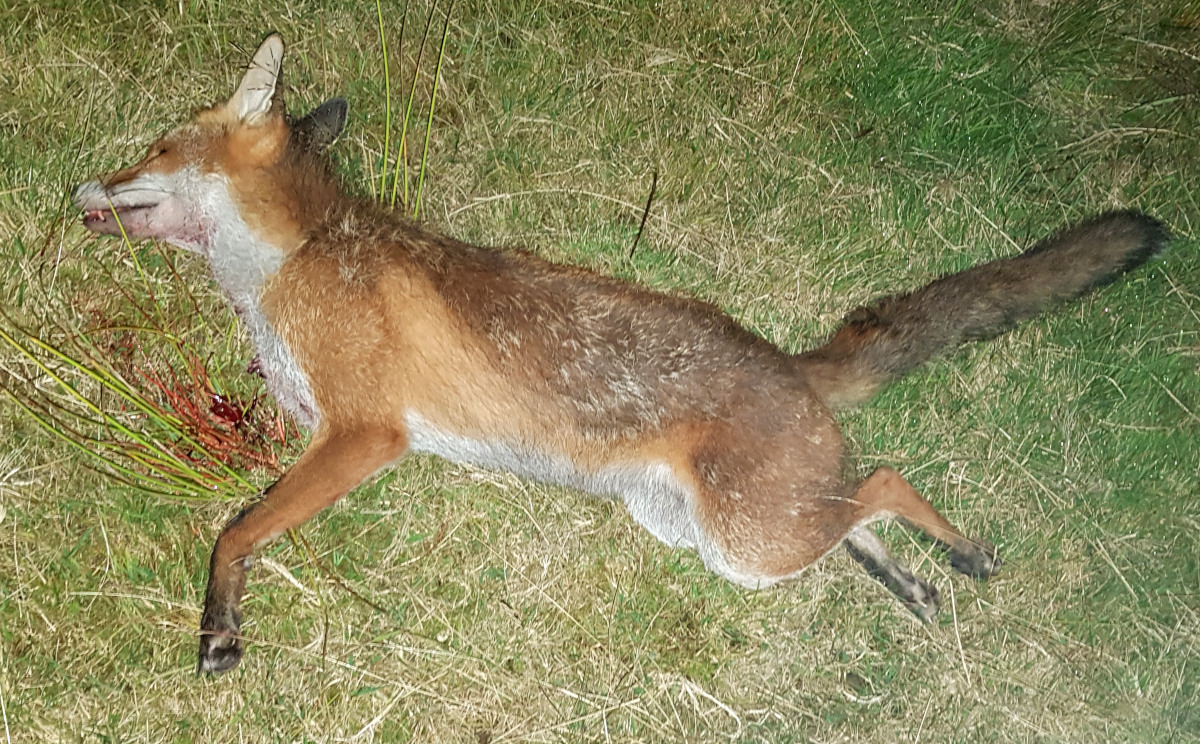Dealing with Foxes. What you need to know about catching, trapping and killing them.

It may be necessary to catch or trap a fox to remove it from your property or to kill it.
Below: A fox in the dark on night vision.
One of the biggest problems with foxes is that they return to a food source and your coop full of chickens is just the thing to get them coming back again and again.
You should firstly make sure that your visitor is actually a fox.
Methods for dealing with foxes:
- Deterrents like lights or noise,
- Livestock protection dogs,
- Physical barriers like electric or fox proof fence,
- Catching or trapping and relocation,
- Killing or shooting them.
However, shooting, catching or trapping a fox requires a specific set of skills and tools, and in many places, there are regulations on trapping and relocating wild animals.
You do not need to shoot the fox yourself, there are many clubs whose members offer this service, sometimes for free.
You do need to exercise some care in dealing with foxes, they are capable of inflicting a nasty bite and in some parts of the world may carry diseases like rabies.
Below: The biggest fox we have dealt with.
Although foxes are considered a problem, they are not classed as a pest, and therefore the control of them can be very much complex.
Legislation surrounding the control of foxes varies according to the country of its control, however when it comes to protecting poultry, the best possible action will be prevention as opposed to treatment.
Here are some things to consider before trapping catching or killing a fox:
Check local regulations: Before attempting to trap a fox, it's important to check your local regulations to ensure that trapping is legal in your area. Some areas have specific requirements for trap size, type, and placement, as well as rules about what to do with the fox once it's trapped.
Snares: Only use free-running snares, which relax when the animal is captured and they must be checked at least once a day. Traps, snares and firearms may not be used in public spaces.
This article is part of a 5 part series of guides on dealing with foxes:
- Outfoxing the fox, the complete guide to protecting your flock with all your questions answered.
- Can chicken runs be fox proof and how to achieve it.
- How do you know if it is a fox killing your chickens?
- Dealing with Foxes. What you need to know about catching, trapping and killing them.
- How to deter foxes and keep them away from poultry.
Use of dogs: It’s illegal to hunt foxes with a pack of dogs and more than two is considered a pack. Dogs are only allowed for flushing or stalking and not for killing.
Keep within the law: The are laws everywhere in the world that define cruel behaviour. Traps and snares must be checked regularly and foxes must be dispatched with a suitable calibre firearm. When it comes to controlling foxes you are not allowed to poison or gas them or destroy the dens. Spring or bear tarps are not allowed.
Keep documents handy: Carry proof you own the land you’re shooting on or written permission from the landowner and any firearms or trapping licence you need.
Use humane trapping methods: It's important to use humane trapping methods that won't harm the fox. Live traps are often used to catch foxes, and they should be checked regularly to ensure that the fox is not left trapped for an extended period of time.
Relocate the fox: Once the fox is trapped, it's important to shoot it quickly or relocate it to a suitable location that is far enough away from your property to prevent it from returning. In many areas, it is illegal to relocate wild animals, so you may need to contact local authorities or a licensed wildlife professional to determine the best course of action.
Take preventative measures: While trapping can be an effective short-term solution, it's important to take preventative measures to keep foxes from returning. This may include securing your chicken coop, using scare tactics, and removing any food sources that may be attracting the fox.
Make sure there is no by-catch: Take care not to trap and kill any other species.
Overall, trapping a fox should be considered a last resort and should only be attempted by individuals with the proper knowledge and experience. If you're unsure about how to handle a fox problem, it's best to contact local wildlife authorities or a licensed wildlife professional for advice.
